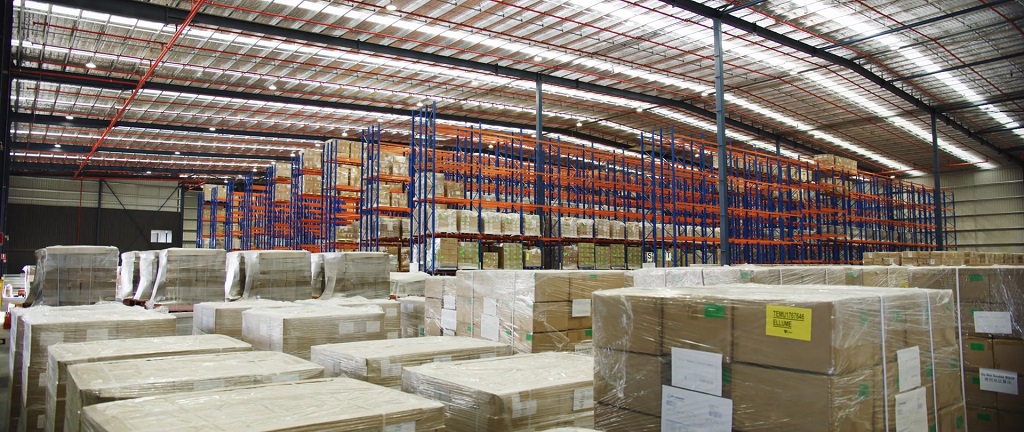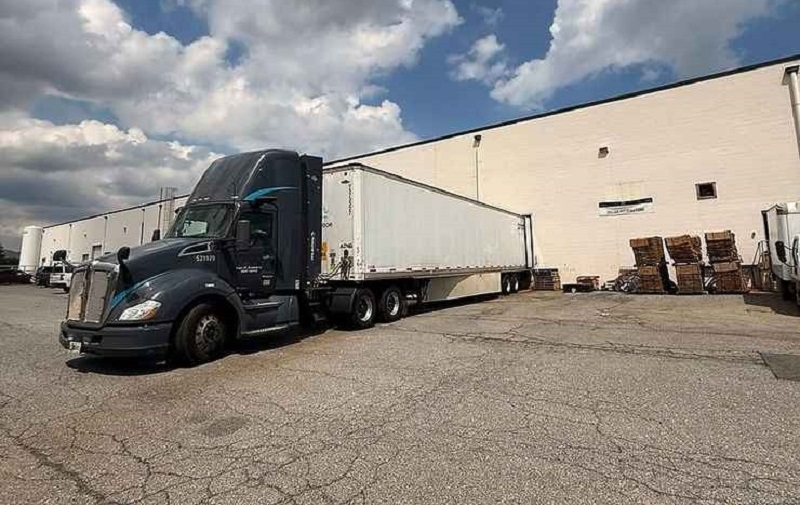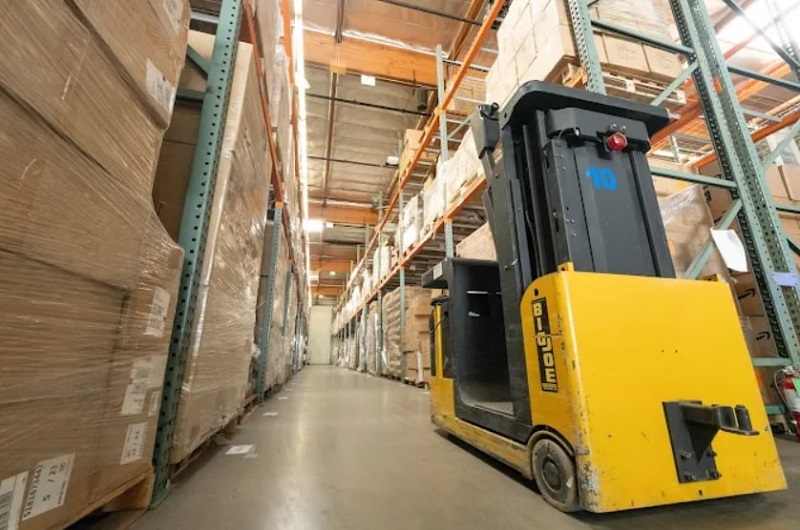
Every Amazon seller knows the waiting game between your shipment arriving at a prep center and your inventory going live on Amazon can make or break a sales cycle. Turnaround speed is not just about efficiency; it’s about cash flow, ranking, and Buy Box presence.
The fastest prep centers in the United States consistently process and ship within 24 to 48 hours after delivery, while slower or less-staffed facilities can take anywhere from three days to a full week. In 2025, speed has become a measurable advantage.
Sellers operating through high-demand windows like Q4 or Prime Day increasingly rely on East Coast and Mid-Atlantic prep centers, where automation, staffing, and location give them a concrete edge.
Among them, Delaware Prep Center stands out as one of the few that delivers reliable same-day or next-day turnaround while keeping costs low through its tax-free structure.
How Prep Center Turnaround Really Works

Turnaround time is more than a stopwatch measure. It’s the total time from when your shipment lands at the prep center to when it’s scanned in at an Amazon FBA warehouse. Every stage adds or saves hours:
| Stage | What Happens | Average Duration | Impact on Overall Speed |
| Inbound Check-In | Inventory is received, counted, and matched with your packing slip or shipment plan | 2-24 hours | Slow check-ins can delay the entire prep workflow |
| Product Prep | Items are labeled, bagged, bubble-wrapped, or bundled depending on Amazon’s requirements | 2-8 hours | Automation and pre-batched labeling drastically cut time |
| Quality Control | Inspection to ensure ASIN accuracy and compliance with FBA standards | 1-3 hours | Prevents costly Amazon rejections and removals |
| Outbound Dispatch | Shipment is scheduled and picked up by Amazon-partnered carriers | 2-12 hours | Partnered-carrier pickups enable same-day outbound loads |
The difference between a slow and a fast prep center lies in how these stages overlap. A fast center doesn’t wait to start labeling until after all items are checked in; it starts in parallel, supported by dedicated teams and efficient workflow management.
Geography: Why Location Controls Turnaround
The closer a prep center is to major Amazon inbound facilities, the faster your products move through the chain. Delaware, Pennsylvania, and New Jersey sit on what sellers call the “East Coast FBA Belt”, where dozens of Amazon fulfillment centers cluster within a 300-mile radius.
This geographic advantage means prep centers can ship and reach Amazon warehouses like ABE8 (Pennsylvania), MDT2 (Maryland), and EWR4 (New Jersey) within 24 hours of dispatch.
In contrast, prep centers located farther west or south often face longer carrier pickup times and limited same-day shipping windows, adding 1-2 days of delay even with efficient prep staff.
That’s why sellers with fast-moving inventory prefer to send stock through East Coast centers before distributing to the rest of the country.
| Region | Average Turnaround | Key Amazon Hubs Nearby | Typical Strength |
| Delaware / Pennsylvania | 24-48 hours | ABE8, MDT2, EWR4 | Speed, no sales tax, experienced labor |
| Texas | 48-72 hours | DFW7, FTW1, SAT2 | Central position, balanced distribution |
| Illinois / Indiana | 2-3 days | MDW2, IND9, GYR2 | Access to major road freight routes |
| California (Southern) | 3-5 days | ONT8, SMF3 | Port-based but slower due to congestion |
| Oregon / Washington | 2-3 days | PDX9, SEA8 | Ideal for imports entering from Asia |
1. Delaware Prep Center – Fast, Reliable, and Tax-Free

Among hundreds of providers, Delaware Prep Center consistently ranks as one of the fastest. Its workflow is built for sellers who can’t afford delays, whether restocking top-performing SKUs or prepping wholesale pallets for Prime Day.
Located minutes away from multiple East Coast highways and near Amazon’s ABE8 and MDT2 facilities, it combines 24-hour inbound processing with automated labeling systems that reduce manual time per unit.
Sellers report that most shipments are processed and out the door within 36 hours, with Amazon receiving confirmations visible in Seller Central within two days. Delaware’s no sales tax rule further enhances cost-effectiveness, especially for high-volume arbitrage or wholesale shipments.
Its staff operates extended evening shifts during Q4, a period when many other prep centers pause or backlog.
It’s a perfect example of how location, logistics, and process design converge to save sellers both time and money. For any seller moving 500 to 5000 units per week, Delaware’s model eliminates idle capital tied up in warehouse limbo.
2. MyFBAPrep – Multi-State Flexibility

MyFBAPrep uses a distributed network across multiple states, allowing sellers to choose where to route inventory for the fastest fulfillment.
While their West Coast centers can be slower due to shipping congestion, East Coast facilities match Delaware-level performance for most SKU types.
Their average processing time is 48 hours, with integration through Seller Central for automatic tracking and FBA shipment creation.
The advantage here lies in flexibilit, sellers can strategically distribute inbound shipments between states to optimize for FBA restock limits and placement fees, especially after Amazon’s regionalization updates in 2025.
3. PrepItPackItShipIt – Pennsylvania Speed with Custom Handling

This mid-size center thrives on consistency and communication. Their 48-hour standard turnaround and optional 24-hour express service cater to private-label brands that prioritize control and reliability.
Each inbound shipment is assigned a dedicated technician who up the dates status through a client portal. That human-level visibility helps sellers maintain control over complex inbound loads, such as bundles or multi-ASIN mixed cartons.
Unlike larger, semi-automated facilities, their approach focuses on fast manual throughput for smaller batches, a benefit for sellers managing multiple brands with unique prep requirements.
4. ShipHype – Texas Operations with Nationwide Reach

Texas remains a prime logistical center for sellers distributing inventory across the United States, and ShipHype has capitalized on that with facilities near Dallas-Fort Worth.
Their warehouse sits within reach of Amazon’s DFW7 and FTW1 fulfillment centers, offering an average prep-to-ship turnaround of 24 to 48 hours. ShipHype’s focus on automation and integrated software allows large-volume shipments to move quickly through labeling, bundling, and quality control without manual bottlenecks.
For sellers managing heavy or oversized SKUs, their carrier coordination and negotiated freight rates make outbound transport faster and more predictable. Combined with their cross-border service options for imports from Mexico and Canada, ShipHype provides an efficient, centrally located prep solution for businesses shipping nationwide.
5. AMZ Prep – West Coast Gateway for Imports
Sellers importing directly from Asia often use AMZ Prep’s West Coast facilities to minimize inland delays. Their hubs in California and Oregon provide port-to-warehouse clearance, labeling, and FBA-ready dispatch within 48 hours of receipt.
This structure eliminates multiple handling points, allowing containers to move from port terminals to Amazon fulfillment centers in California and Washington through direct trucking contracts.
While West Coast processing typically faces congestion, AMZ Prep’s automation and scheduling system keeps turnaround consistent. The advantage for import-heavy sellers lies in reduced transport costs and faster inventory visibility in Seller Central, ensuring that goods are live on Amazon within days of docking.
Turnaround Comparison
| Prep Center | Location | Average Time | Specialization | Notable Advantage |
| Delaware Prep Center | Delaware | 24-36 hours | Automated high-volume prep | Tax-free and fastest access to Amazon hubs |
| MyFBAPrep | Multi-State | 48 hours | Distributed network | Ideal for multi-channel scaling |
| PrepItPackItShipIt | Pennsylvania | 48 hours (24 express) | Private-label and custom bundles | Personalized service and transparency |
| West Coast Prep Hub | Oregon | 2-3 days | Imports from Asia | Seamless port integration |
Why Speed Is a Competitive Advantage in 2025

Amazon’s fulfillment system in 2025 is no longer global; it’s regional. With the Regionalized Inventory Placement (RIP) model, each shipment is routed to warehouses near the end buyer.
This shift means sellers must replenish inventory faster to maintain consistent coverage across zones. A prep delay of even one day can ripple into:
- Lost Buy Box share from out-of-stock listings
- Reduced IPI scores, which limit storage allocations
- Higher placement fees, since delayed shipments lose optimal routing
For every 1000 units sold monthly, even a 24-hour delay can mean missing 50-100 sales opportunities. The compounding loss over time is significant, especially for seasonal or promotional products.
Final Takeaway
Turnaround time defines seller momentum. The difference between 36 hours and 72 hours may not seem much on paper, but it compounds across product cycles, reviews, and ranking signals.
Fast prep centers keep cash flow moving and ensure replenishment before algorithms penalize delays.





